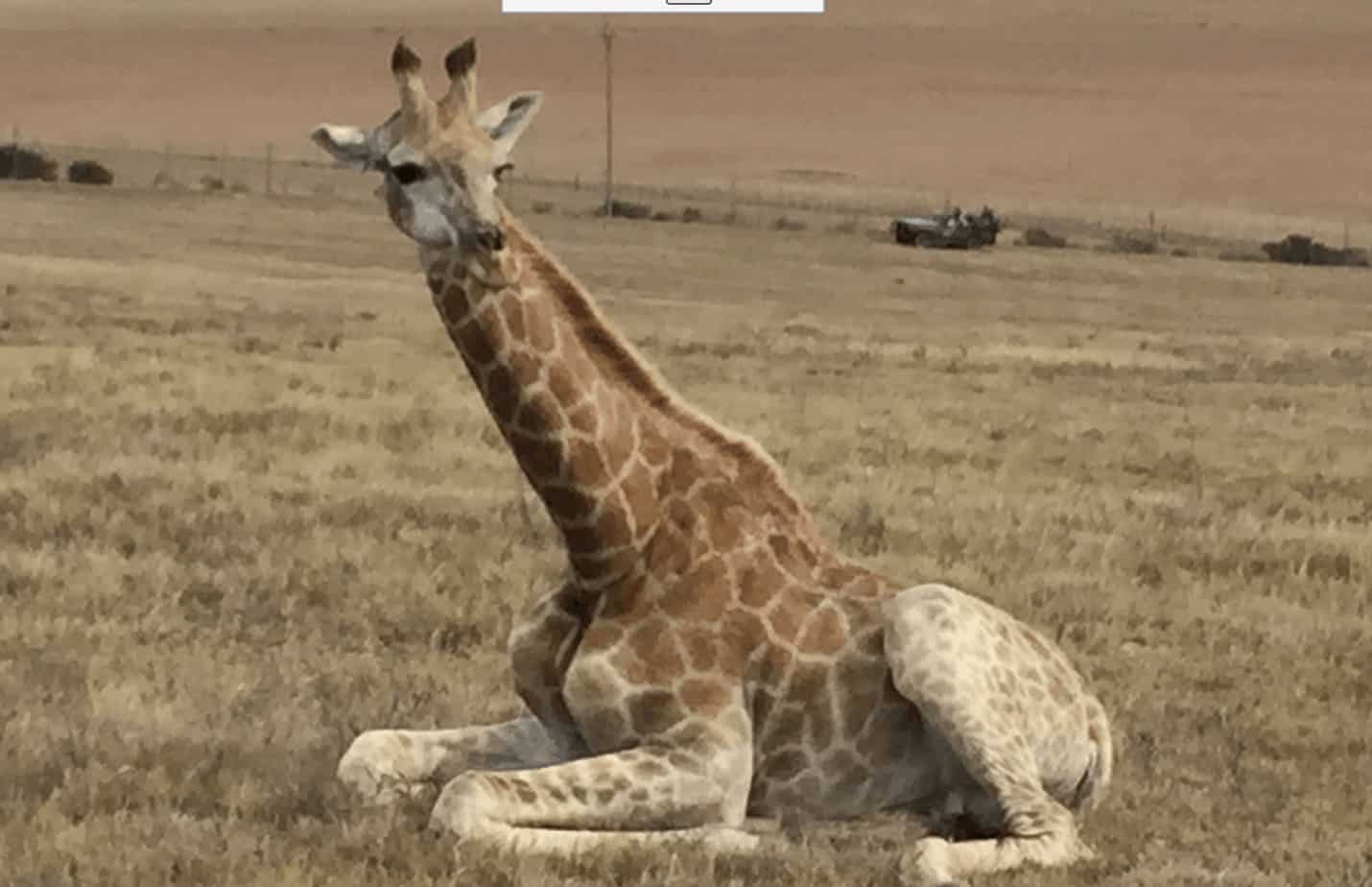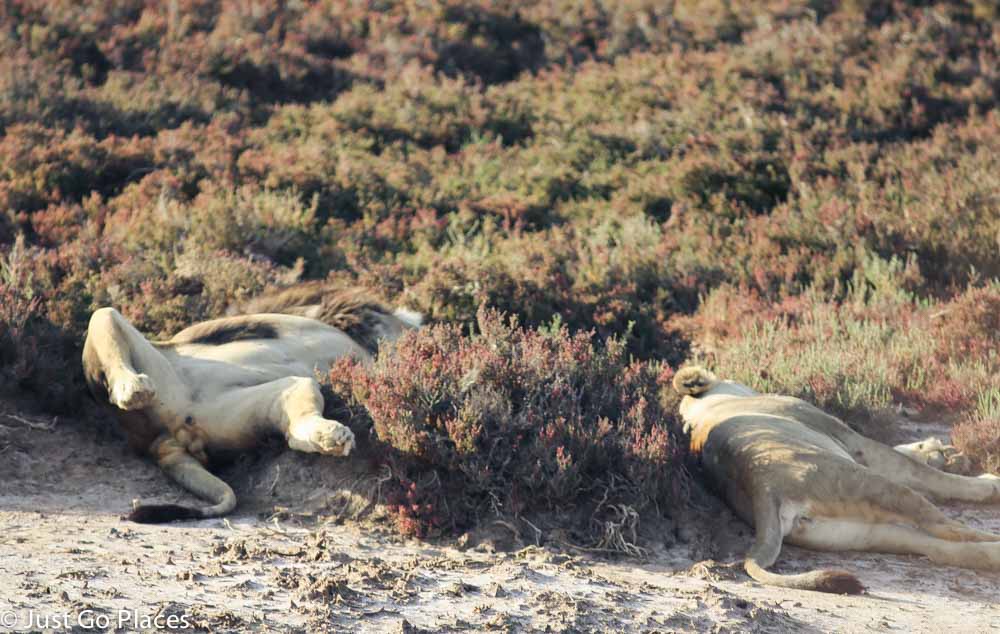Ready for a safari with the children but want a gentle introduction to the experience? The Garden Route Game Lodge is a perfect option because it is in malaria-free South Africa close to Cape Town. Located on the famous Garden Route, this experience will be an African safari with kids that will whet their appetite for a larger safari someplace like the Kruger National Park.
Contents
Garden Route Game Lodge
You get to go out on early morning and evening safari rides in open jeeps at the Garden Route Game Lodge in Albertinia. In between, you can relax at the Game Lodge. There are family rooms where all four of us were able to stay.
The Best Safari For Kids
This small scale experience was the best safari for kids for several reasons.
- My kids loved the playground as well as the pool.
- The Garden Gate Game Lodge is an easy drive from Cape Town and an easy option for families with young children. It is malaria-free and so you don’t need to worry about mosquito bites.
- Food is included at the Garden Route Game Lodge and served buffet style. My children (even the fussy one) had plenty of options that they could pick from.
- On a smaller safari, you can get used to some of the animals and see them regularly. For example, the teenage giraffe Iggy and the lions were particular favourites of my children.
The Garden Route Game Lodge Animals
The Garden Route Game Lodge has the Big Five available for viewing but whether or not you see them is up to them. The big five are the lion, the elephant, the buffalo, the leopard and the rhino. We saw everything except the leopard. My son claims to have spotted the leopard which the safari guide told us was hiding in the bushes. I personally did not see anything through the foliage.
They also have the lesser known Ugly Five which are the hyena, wildebeest, vulture, warthog and marabou stork. We also saw lots of other mammals like giraffe, zebra, antelope and ostriches.
The Garden Route Game Lodge does have cheetah at the safari park. However, you have to be a certain age to see them because cheetah see young children as prey.
Why A Safari With Kids is Special
The one thing we discovered on our South Africa trip is that animals really do have lots of personality. Before I had kids I thought children were little blank slates and their personalities developed later. Similarly I hadn’t given much thought to the personalities of non-domesticated animals. I’ve already mentioned the meditating penguin who stared at a rock on Boulder Beach for hours.
A Giraffe With Attitude
Now meet Iggy, a 3 year old giraffe at the Garden Route Safari Lodge. In giraffe terms, Iggy is a teenager. Whenever we saw him, he was near his parents but still apart from them. Either he was in the field across from them or another set of trees nearby, etc. He seemed to be trying to assert his independence while his mother watched from nearby. My children chuckled when he moved away every time his mother moved closer to him.
In this picture you see Iggy sitting down which only young giraffes do. It’s hard for a giraffe to get up and so sitting makes them vulnerable to predators. Most giraffes sleep standing up. They don’t need much sleep – between 20 minutes to 4 hours in a 24 hour cycle. Iggy seemed to have a bit of a cough so perhaps he was feeling poorly!
We were told Iggy means “feet first”. All giraffes are born feet first. The fall down from their mother to the ground starts their heart pumping and clears the birth gunk from his body.
Iggy is ready for mating and the park is looking for a suitable partner for him. Maybe he’ll be ready to hang out with his parents again once he’s got a girlfriend!
The Mighty Lion
Although the rest of the Garden Route Game Lodge is an open safari, the lions we saw were in a separate enclosure. Our guide explained to us that lions are natural hunters who kill even if they are not hungry. If the lions at the safari were let loose, they would need to replace yearly many of the other animals we saw such as the springbok, impala and zebra.
On the plus side, we could see the lions every day and watch their behaviour. After having seen The Lion King a million times, my children could sit and watch actual lions. Mostly the lions slept but occasionally they would wander around.
It was fascinating to watch the dynamic between the male lion and his little harem of three lionesses. There was clearly a Chief Wife who kept a wary eye on us. She was quite protective of the male lion. From what we could tell, she couldn’t care less how close our jeep got to the other lionesses.
At one point, the one we called Chief Wife was clearly wary of us and moved up closer to the male.
10 Surprising Facts About Lions
In the jungle, the mighty jungle, the lion sleeps tonight.
I hate to ruin your 60’s song nostalgia but, actually, that song is wrong for two reasons.
1. A lion isn’t the king of the jungle because they don’t live in jungles. No one is sure why jungles came to be associated with lions. Lions like to live in grasslands, scrub country and plains. They use the vegetation to creep through the landscape and pounce on unsuspecting prey.
2. Lions primarily hunt at night and sleep during the day.
Thanks to our safari at the Garden Route Game Lodge in South Africa, I now know lots about lions. Our safari guide was very knowledgeable about lions. Did you know these other 8 surprising facts about lions?
1. Male lions are not good hunters. All that mane gets in the way. The mane protects the lions though when the males get into a fight. A male lion only gets to keep his pride for 2-3 years before a stronger male lion comes along and takes over. Hence, they do a lot of fighting.
2. Male lions pretty much spend their time eating, sleeping and mating. If you add in beer and a sports channel on television, that would seem an ideal lifestyle for many men I know too.
3. A lion ‘romp’ though doesn’t last very long (less than a minute) but they can ‘romp’ up to 40 times a day. No wonder the Chief Wife lets her man have a harem.
4. The female lions at Garden Route Game Lodge got yearly vaccinations to prevent pregnancy because any lions born in captivity would need to be sent to a zoo or a safari park with other captive lions. Captive lions can not be released into the wild because they lack hunting skills.
5. What do male lions do? They defend a pride’s territory. The male lion we saw on safari has the easiest job ever since his pride is the only one in the safari park and his territory is protected by a fence.
6. Although the females are the hunters, the male lion gets to eat first. The lionesses also raise the children and teach them hunting skills.
7. A lion could sleep up to 20 hours a day. Although they look kind of sleepy and dopey, don’t be fooled. A lion can spring into action and run up to 50 miles per hour in short bursts.
8. You can tell a male lion’s age by the colour of their mane. The darker the mane, the older the lion. A lion in captivity can live up to 25 years presumably because they don’t have the stress of protecting their pride and their territory.
***
My children were fascinated with this gentle introduction to Simba and his friends. Next time we are planning on a safari at a larger national park so that we can see a slightly less molly-coddled version of lions in the wild.
I have found some really useful tips for taking the kids on safari – such as keeping them interested with their own binoculars and alternating safari days so the early morning wake up calls aren’t so terrible. Especially with my children now moving onto the tween/teen morning slumber stage, I will found that advice particularly useful.
We packed a lot into 3 days because a safari experience can be expensive. However, when you are travelling with children, perhaps 6 days would be a better option. After all what’s the point of a cool and expensive holiday if your family isn’t enjoying it?
SPREAD THE WORD! PIN THIS TO YOUR TRAVEL PINTEREST BOARDS FOR FUTURE REFERENCE!

South Africa is hands down one of the best places to go for a safari and to see lions in the
wild, and if you go with the family, your kids will absolutely love it. Discover 10 cool facts
about lions we learnt during our safari in South Africa! These surprising facts about lions for
kids will blow their minds. #southafrican #lion #safari #lions #coolfacts
This site generates income via partnerships with carefully-curated travel and lifestyle brands and/or purchases made through links to them at no extra cost to you. More information may be found on our Disclosure Policy.












